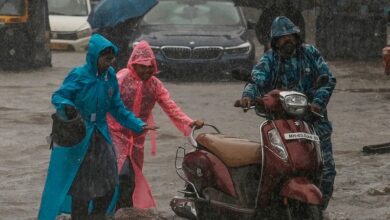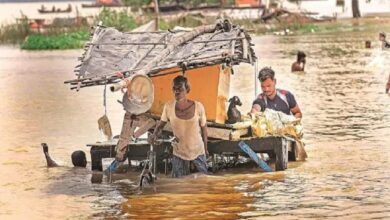Power in climate change policy-making process in South Asia
Against this background, the remainder of this paper details the nuances and implications of power in climate change policy-making in South Asia.
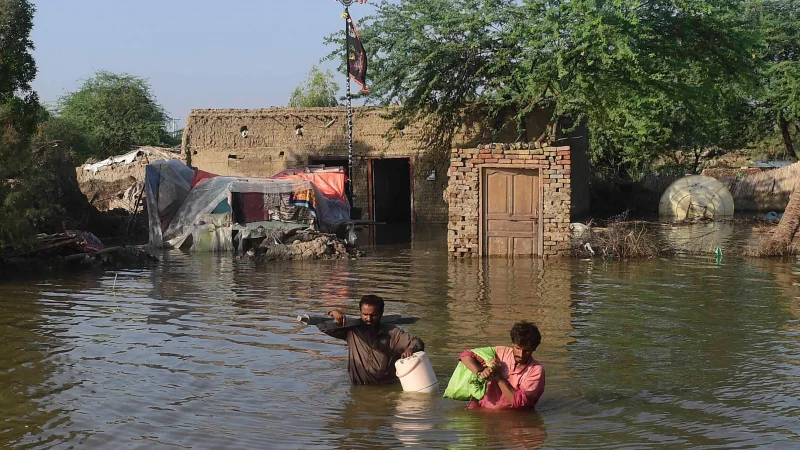
1. Introduction
Power interplay between actors influences climate change policy-making processes but has yet to receive sufficient attention in South Asia’s climate change governance and policy literature. Policy actors deploy material and ideational power to pursue their ideas, interests, and priorities during policy-making processes (Krott et al., Citation2014; Vij et al., Citation2019; Hayward & Lukes, Citation2008; Dewulf et al., Citation2009; Rein & Schön, Citation1996; Dahl, Citation1957). Policy actors represent nation-states, development organizations, donor agencies, ideological groups and activists, and media, all tied in a relationship at a given juncture in time.
Within power scholarship, and for the purpose of this article, we use the term ‘power interplay’ and conceptualize it as an interaction between policy actors, representing diverse institutions and competing or complementing interests. We take a relational view of power, considering that actors are interconnected and interact to achieve their interests and priorities (Rein & Schön, Citation1996). Interaction can be considered communication (written or verbal) between two or more actors in a policy context.
Power interplay analysis can aid in investigating climate change barriers that are simply marked by uncertainties and ambiguities. The extant literature on climate change offers a limited explanation of the complex nature of designing climate change policy processes that are influenced by power interplays between the actors (Vij, Citation2019; Vink, Citation2015; Ingold, Citation2011). Analysis of power interplay is often marked by controversies; therefore, in certain cases it is purposefully overlooked by policy analysts, donor agencies, governments and academics. It is particularly overlooked in order to not offend the powerful actors involved in the policy-making processes; to boost the political feasibility of policy change; or to smooth the implementation of a project or a programme, at the cost of powerless actors. However, power interplay analysis has the potential to bring comprehension of these nuanced challenges to policy change and to improve design and implementation of climate change strategies (Ingold, Citation2011).
There are at least two research and policy gaps in the climate change debate on power and policy-making in South Asia. First, few climate-related studies emphasize power struggles, the behavioural aspects of actors, and changing interests and priorities of actors (Nightingale, Citation2017; Tschakert et al., Citation2016; Eriksen et al., Citation2015). Although there has been a rise in research on how civil society, business and state actors can implement climate policies, these studies rarely address how power struggles between actors influence the choices made in designing and implementing climate policies (Ojha et al., Citation2016). The substantive climate change policy literature from South Asia focuses on international politics, emphasizing the power of international organizations, think-tanks and donor agencies to influence the interactions between developed and developing countries (Tanner & Allouche, Citation2011; Ayers, Citation2011; Dubash, Citation2013). It is essential to study the behavioural aspects of actors as it can aid in designing interaction strategies to influence the cognition and behaviour of the actors during the policy-making process. Moreover, inquiring about the behavioural and cognitive aspects of actors can help in understanding and building trust between the variety of actors, which can support in designing and implementing climate change strategies that rise above the vested interests of actors.
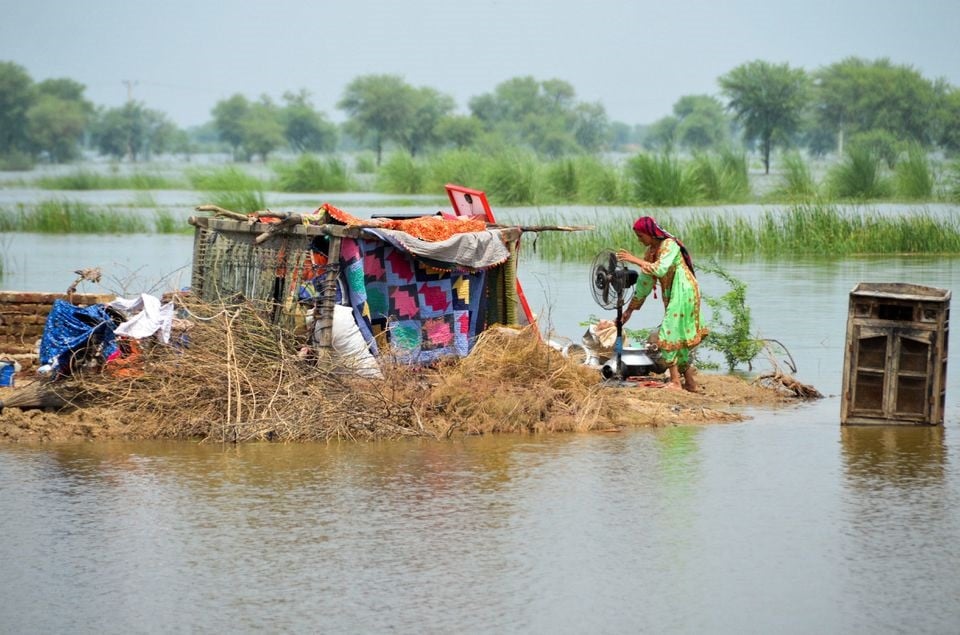
The second gap relates to the negative effects of power interplay, such as short-termism of climate action plans, exclusion of certain policy actors and ideas in climate policy-making processes, lack of transboundary-level (regional) adaptation and lack of coordination between institutions (Swyngedouw, Citation2011; Mehta et al., Citation2021). Social science scholars have diagnosed power as an important underlying reason for short-termism and the exclusion of actors from climate change policy-making (Vij et al., Citation2019; Stock et al., Citation2020). For instance, limited resources from donor-funded short-term (less than five years) projects and, and the approach of finding quick solutions from the state, leads to designing weak and exclusionary processes and short-term climate plans. Decisions to design such an approach or a project are reflected in who is in power and who makes the decisions. Indeed, it is not the vulnerable population, who desire change and improved living conditions, making such decisions. Moreover, the existing literature focusing on South Asia does not reveal solutions to the negative effects of power. Researchers have yet to elucidate how different actors can design inclusive and equitable processes for climate change policy-making (Klijn & Koppenjan, Citation2016). Literature rarely offers solutions that explain how to meet the collective interests of actors and their contestations regarding underlying ideas relating to the science-policy gap. Moreover, there is a continuous struggle between actors towards different approaches to designing solutions. An example of this could be the difference between scientists and politicians in perceiving the temporal logics of climate policies. There is very limited literature that offers strategies to deliberate and develop climate policies that can integrate scientific inquiries that span up to 100 years, with a 10-year planning horizon; instead, policies are often developed by politicians who may prioritize upcoming elections. When politicians and scientists have different approaches to designing solutions, they may not be able to work coherently together in a solutions space.
Against this background, the remainder of this paper details the nuances and implications of power in climate change policy-making in South Asia. Following the introduction (Section 1), we present a brief methodology (Section 2) to explain our approach. Next, we present the analytical grounding, supported by cases of power interplay in climate change policy processes (Section 3). Section 4 discusses the key reflections and nuances from the cases. Finally, we conclude (Section 5) with the implications of power interplay to recognize the benefits of studying power interplay in South Asia and its implications for climate policy.
2. Methods
South Asia is increasingly becoming more vulnerable and possesses a low readiness to respond to climate-induced disasters such as floods and droughts (IPCC, Citation2022). In this paper, we explain how power interplay influences policy-making at multiple levels of governance in South Asian countries, reflecting on the identified research and policy gaps. The article uses the interpretive approach and follows a case study method to analyse how power interplay influences climate change policy-making in South Asia, refining the understanding of possible solution spaces.
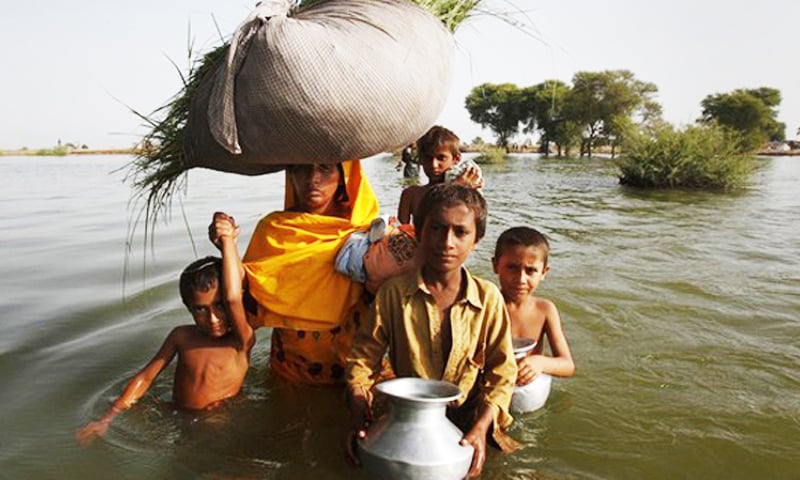
The empirical cases are built based on two sources of data – (1) the primary data collected by the authors in different countries and (2) secondary literature focusing on climate change and power (political and social) in South Asia. The primary data was collected in different periods (between 2015 and 2019) for doctoral research. 81 semi-structured interviews were conducted across four countries in South Asia (for country-wise details please see Supplementary Materials) by three authors of this paper. Different semi-structured interview protocols were used and designed for each case. Semi-structured interviews were chosen as a method for this research to parse out the perception of actors and influence over decision-making processes. The duration of each semi-structured interview did not exceed one hour, wherein respondents provided a detailed description of their organizational activities in climate change policy processes, management, and implementation. Interviews were conducted in English, Hindi, Urdu, Bengali, and Gujarati, as per the respondents’ fluency.
The interviewees included government representatives directly involved in policy-making processes; civil society actors; representatives of international development organizations and donor agencies; representatives of NGOs implementing climate projects; and representatives of donor agencies (see Supplementary Materials). The qualitative data from the interviews allows us to parse out the perception of actors and understand how these perceptions influence the climate policy-making processes; we used these data across different cases.
Taking inspiration from comparative analysis of climate policy-making (Vij et al., Citation2019; Stock et al., Citation2020; Biesbroek et al., Citation2010), we analysed interview data to reflect on the negative effects of power interplay, capturing themes such as short-termism of local adaptation plans, exclusion of certain policy actors in policy-making processes, and lack of transboundary-level adaptation in each case. Data quality was ensured by professional translation of interview transcripts, verified by fluent speakers of the language. Interviews were analysed using qualitative methods, including content and discourse analysis techniques. Content analysis was conducted using inductive and deductive coding procedure. The coding process emerged with the themes relating to various connotations of power interplay, including prioritizing technical solutions, exclusionary design and implementation of climate policies, and an agenda of securitization. The key-informants were asked questions pertaining to governance strategies, and to who is influencing the decisions and how this is happening. For instance, questions were asked pertaining to decision-making processes relating to climate change adaptation (CCA) resource allocation. This also helped in analysing how resources (material and ideational) were garnered between the actors.
3. Role of power in shaping climate change policies: cases from South Asia
South Asia is considered one of the global regions most vulnerable to climate-related impacts (IPCC, Citation2014). Throughout the next century, South Asia will experience severe impacts of climate-induced disasters (IPCC, Citation2014; Byers et al., Citation2018). South Asia’s climate vulnerability is further complicated by unprecedented population growth, low institutional capacities, socio-economic vulnerabilities and high dependence on natural resources in the region (Bhave et al., Citation2016; Rasul, Citation2016; Haines et al., Citation2006). Scholars show that the current climate policies in South Asia are generally not designed to deal with uncertain distant futures (Wise et al., Citation2014; Buurman & Babovic, Citation2016). There have been increasing calls to integrate long-term thinking about the future impacts of climate change and to avoid short-term maladaptive practices (Colloff et al., Citation2017). However, the CCA literature provides very few insights on the political nature of long-term planning and the influence of power in shaping the temporal dimension in CCA policies in South Asia. Long-term planning is politically challenging because of the uncertainty involved in climate science and some countries’ lack of political stability (Vij et al., Citation2019; Nightingale, Citation2017; Nagoda, Citation2015).
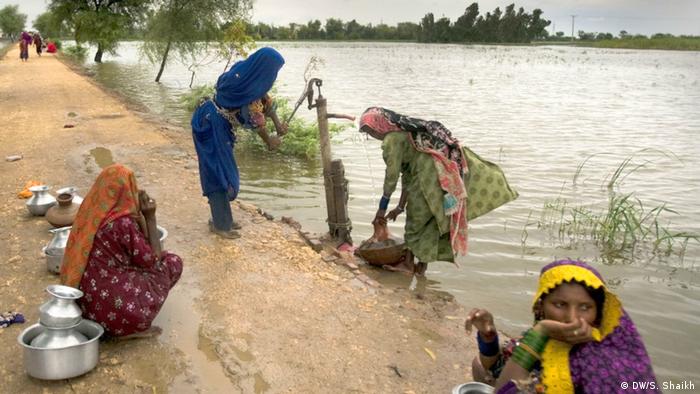
National governments in the South Asia region are continuously planning systematic efforts to prepare and implement dedicated climate policies (Mishra et al., Citation2019; Im et al., Citation2017; Vij et al., Citation2017). These efforts include preparation of National Adaptation Programmes of Action (NAPA); of national climate policies; of sub-national climate strategy documents; and of Nationally Determined Contributions under the 2015 UN Paris Agreement. Such climate change plans and policies arise out of inherently complex and iterative processes that include various actors at different levels of governance, with distinctive ideas and interests, where actors are continuously puzzling and exchanging over various ideas with one another (Stock et al., Citation2020; Head, Citation2019; Giddens, Citation2015). Such exchanges are also essential to steer and mobilize power for making decisions; this is done by exercising collective decision-making for attaining a solution to a social or an environmental problem (Stock et al., Citation2020; van der Steen et al., Citation2016). Power can manifest both negative and positive outcomes, depending on the interests and priorities of the actors involved in an interplay (Vij, Citation2019).
Although actors at the nation-state level play a critical role in these processes, the model of state-centred policy-making has shifted to more deliberative and interactive processes with the inclusion of various state and non-state policy actors (e.g. representatives of central and sub-national governments, non-governmental organizations, international aid agencies, civil society organizations, academic and research institutes, political leaders) (Mathur, Citation2008; Hajer and Wagenaar, Citation2003). However, these actors deploy different material and ideational resources when engaging in power interplays, such as overpowering or even excluding certain members to meet their interests and push their priorities during climate policy-making processes. Material resources refer to tangible resources in the form of finance, human resources, military strength, or sometimes intangible resources such as a strong political position or legitimacy (Orsini, Citation2013; Fuchs & Glaab, Citation2011). Material resources are used by actors for agenda-setting or directly influencing the decision- making process. Ideational resources refer to soft resources such as the ability to utilize ideas, knowledge and narratives to influence policy processes. Ideational resources are used to manipulate and influence the choices of action in policy-making processes (Carstensen & Schmidt, Citation2016).
The complex climate policy-making domain of South Asia is ideal for studying the material and ideational resources within power interplays between diverse actors and institutions. Below, we present five cases from Nepal, Bangladesh, India and Pakistan to explain the role of power in climate change policy-making processes. Each case presents a unique challenge in climate policy-making and how it influences the policies prepared and implemented at different levels of governance (see Table 1). The cases also emphasize the understanding of power interplay so as to help identify feasible and practical solutions for inclusive policy-making processes.
3.1. Power and participation in solar parks of India
To meet mitigation targets established under the UN Paris Agreement, the Solar Energy Corporation of India (SECI) opens tenders for companies to bid for large-scale solar parks. Drawing upon and circulating discursive formations related to ecological modernization and economic development for regions that suffer from economic and energy poverty, SECI garners support and funding from international institutions that seek to aid India in a renewable energy transition as a form of climate action by installing utility-scale solar plants in those regions (Stock, Citation2021a). Once operational, much of the electricity generated powers nearby urban, economic or industrial centres at the expense of local villages often inhabited by agropastoral peasants. Despite being adjacent to a solar park, many households suffer from increased electricity rates without improved reliability of current (Stock & Birkenholtz, Citation2021). Utilizing a combination of material and ideational resources, SECI assists project developers in establishing these solar parks in rural and arid locations with abundant solar irradiance. SECI functions as a development broker between transnational institutions (often businesses) and subnational governmental institutions, connecting national and transnational climate goals with ground-level actions. State agencies facilitate land selection and acquisition, and project financing for firms seeking to generate solar energy. SECI coordinates with state-level land bureaucracies, namely the state revenue department and block-level and district-level officers who work with village councils to acquire land for the projects (Jonnalagadda et al., Citation2021).
However, solar park development can transpire with numerous procedural and distributional injustices that exacerbate local social power asymmetries. For example, in Andhra Pradesh, the state government promised economic development through solar projects for a poor region of the state, touting an improved and ‘fair’ land acquisition law (Right to Fair Compensation and Transparency in Land Acquisition, Rehabilitation and Resettlement Act of 2013) (ideational resources). However, the state seized land formerly distributed to poor and landless Dalit peasants to develop the Kurnool Solar Park and sought to pacify local peasants whose lands were acquired through corporate social responsibility schemes (material resources) (Stock & Birkenholtz, Citation2021). Adding insult to injury, many corporate social responsibility schemes associated with solar parks exclude poor and marginalized local actors, especially those of lower caste status (Stock, Citation2021c). In Gujarat, the Gujarat Solar Park was developed by the state energy company Gujarat Power Corporation Limited (GPCL) that leveraged a colonial-era law (Land Acquisition Act of 1894) which enabled eminent domain seizure of private lands and left many landowners without proper remuneration. Project development was also fraught by a lack of two-way information exchange between the project developer (GPCL) and residents, with no attempts to hold public meetings or include local communities in decision-making processes related to the project; decision-making was characterized by elite capture of local procedural processes by higher-caste and more educated residents (Yenneti & Day, Citation2015).
Solar park development can also exacerbate gendered power asymmetries at the local scale. India’s solar parks constitute flagship projects under the government’s Nationally Determined Contributions (NDC) to the 2015 Paris Climate Agreement, which mandates that all of the nation’s NDC-related projects aim to address challenges of ‘gender equality and women empowerment’ (Government of India, Citation2015, p. 4), and to ‘strengthen adaptive capacities of the vulnerable communities’ (Government of India, Citation2015, p. 20). GPCL has also committed to project outcomes that lead to the ‘upliftment of Women & Child’ (GPCL, Citation2015). Yet once land for the Gujarat Solar Park was acquired and enclosed, resource-dependent women who earlier relied upon public lands to fetch firewood were relegated to spending additional hours every trip to procure this resource from further distances; many energy insecure households that lack adequate electricity are also dislocated from biomass resources (Stock & Birkenholtz, Citation2020). Public land enclosures for the solar park disproportionately affected lower-class and lower-caste women from these villages (Stock, Citation2022). Essentially, GPCL used discourses of gender-sensitive outcomes (ideational resource) to garner public approval while simultaneously using a colonial-era law (ideational resource) that aided the state in expropriating private lands with minimal remuneration to local landowners (material resources).
Having synergies between mitigation and adaptation, solar park development transpires through power interplays that often represents a paradox of development. In Andhra Pradesh and Gujarat, solar park promises of energy security and gender-responsive development has led to gendered land and energy dispossessions. Essential for achieving national climate goals, solar parks that exacerbate local power relations are permitted to continue despite local opposition. Moving forward, the development of solar parks must be power-sensitive and mitigate more than carbon, striving to ameliorate the vulnerabilities of local peasants and marginalized groups.
3.2. Use of authority in adaptation governance of Bangladesh
Adaptation governance in Bangladesh is dominated by a few government organizations that operate at the national level under sectoral (e.g. agriculture, water resource) ministries. Policy actors in these organizations use authority (material resources) and knowledge (ideational resource) to garner funding support from international aid agencies or the national government to mobilize subnational level organizations (i.e. district level, local level) to plan adaptation actions. The Bangladesh government focuses more on infrastructural solutions, rather than on a well-crafted blend of social-environmental-technical solutions. This emphasis on a particular sector (e.g. water resource) and its infrastructure makes some organizations more powerful than others with access to greater material resources (Ishtiaque et al., Citation2021). As such, despite the selection of the Ministry of Environment, Forestry, and Climate Change as the focal ministry for adaptation governance, water resource and infrastructure-related ministries have more material resources to employ. These resources even enable them to create parallel capacities that other organizations already possess. For example, to obtain foreign funds, the local government engineering department aspires to become a ‘one-stop centre’ by managing simultaneously infrastructure, forestry, and social development related works. Thus, by using material resources, these organizations discourage the involvement of other organizations in adaptation actions led by them.
Some powerful ministries (Water Resources Ministry, and Planning Ministry) with material resources exclude key actors in Bangladesh, side-lining important policy actors (e.g. Ministry of Social Welfare, non-government organizations) and emphasizing on hard infrastructure-oriented solutions. For instance, the lack of shelter capacity, maintenance, and community participation has exacerbated the vulnerability of Chittagong’s (Bangladesh) marginalized urban population (Dhakal & Mahmood, Citation2014). Similarly, the construction of polders has increased the extent of pluvial flooded area and increased inundation (Adnan et al., Citation2019). This exclusion of local communities in such processes lies in the historical treatment of disaster risks in Bangladesh.
Moreover, during the adaptation implementation and later evaluation processes, organizations follow a strict hierarchical process of governance – national to regional (or district) to local levels. This structure of governance empowers the regional organizations significantly because they can control the flow of local information to the national organizations as well as national level decisions to local organizations. Acting as gatekeepers they can deploy both authority, funding (material resources), and knowledge and information (ideational resources) to wield power over organizations (ministries and NGOs) at different levels. In these ways, the regional organizations can influence decision-making at both the national and local level. On the other hand, local-level organizations are limited only in using knowledge and information (ideational resources) to exercise power.
In flood risk management, for instance, district level state agencies do not have sufficient material resources to declare or address emergencies, as they only pass the information to regional level organizations that have the power to address emergencies (Ishtiaque et al., Citation2017). This lack of authority incapacitates local-level organizations to undertake emergency decisions and actively participate in the decision-making processes (Ishtiaque et al., Citation2021).
3.3. El Niño-induced drought and climate governance in Pakistan
The 2015-2016 El Niño-induced droughts revealed several fractures in intergovernmental collaboration and coordination between policy-making actors at multiple levels of climate governance in Pakistan (Zia et al., Citation2017). These actors included representatives from the national meteorological department and national and provincial disaster management authorities; to manage drought, they periodically issue early warning communications, develop action plans for disaster preparedness and climate change adaptation, and facilitate the transfer of financial and technical resources through a population-weighted resource transfer system from the federal to provincial and local governments. In the aftermath of the El Niño-induced droughts in Balochistan, some of the local-level actors, such as representatives of political parties (e.g. Pakistan People’s Party, Awami National Party, Balochistan National Party) and civil society actors felt that the federal government continued to hoard material resources for building their technical capacities (e.g. for improving the accuracy of spatially explicit drought forecasts), while spending less on building the capacity of local-level actors for implementing climate change adaptation plans (Zia et al., Citation2017, Citation2022).
Federal government inaction was distinctive in the insurgency-hit tribal regions of Balochistan, where local governments did not receive early drought warnings from the federal government, nor were the local-level officials included in debates on responses to drought induced by a complex combination of global climate change and more local El Niño events (Zia et al., Citation2022). Specifically, for the insurgency-hit regions of Balochistan, the federal government used a narrative (ideational resources) that depicted local-level actors as ‘technically weak’ or ‘ineffective’ to implement El Niño-related adaptation schemes. This narrative from the federal government absolved them from transferring the much-needed financial resources to the provincial government in Balochistan. By using this narrative of technical and managerial impotence, the federal government also issued early warnings to a selected few local-level public sector agencies, while implicitly excluding the dissemination of knowledge to other ‘hostile’ and ‘terrorism-hit’ parts of the Balochistan province. Overall, lack of trust between actors at different levels of government thus impeded climate change adaptation efforts to people in geographic areas that have been historically marginalized both as a cause and consequence of structural inequities and sheer lack of material resources. Allocation of financial resources from the federal government, for example, to aid farmers and families affected by the multiple drought events in Sindh and Balochistan between 1980 and 2016 have led some scholars to wonder whether the crop and human lives lost were the cause of man-made or of natural disasters (Mazhar et al., Citation2015; Pasha et al., Citation2015). Poor administrative and political response to drought events in Sindh and Balochistan led to increased socio-economic damages that could have been otherwise averted. Lack of financial support to aid in the recovery of drought affected regions has also led to increased support for nationalist Parties, e.g. Balochistan National Party.
3.4. Purposeful status quo in the Brahmaputra basin
In the Brahmaputra basin, cooperation on climate adaptation is missing due to persistent power struggles between India, China, Bhutan and Bangladesh concerning the specific ways of controlling floods and tapping the potential of the Brahmaputra River (Vij et al., Citation2020). Each country makes its own individual efforts to reduce the impacts of climate change. For instance, to reduce the impacts of flooding, the national government of India follows a technocratic approach, building storage structures to meet the growing energy demand and reduce climate change impacts (Barua et al., Citation2018). But if the upstream Brahmaputra River is controlled by storage structures, it will impact the livelihoods of millions in Bangladesh.
The ‘Brahmaputra Dialogue’ (BD) is the only continuous Track 1.5Footnote1 informal dialogue initiative sharing various insights on the complexities of the Brahmaputra River (Barua et al., Citation2018). The BD project started as a bilateral dialogue platform between Bangladesh and India and eventually became a multilateral platform including all the riparian countries. Bangladesh and India have been purposefully not making decisions for the Brahmaputra River by using material and ideational resources. India uses material resources, such as geographical position, military might and economic growth, to make unilateral decisions on participation (Barua et al., Citation2018). India also uses ideational resources – such as the narrative of confrontations and loss of dignity to lower and weaker riparian nations, complex bureaucratic channels and permissions, and hegemonic vulnerabilities – to prioritize domestic issues on the Brahmaputra and to pursue the status quo. To elaborate, India being an upper riparian country does not welcome open confrontation with lower and weaker riparian countries. Bangladesh has been confronting India during BD meetings on two issues (Vij et al., Citation2020). First, Bangladesh clearly stated that India is not very cooperative in flood management and hydrological data sharing, with Brahmaputra being securitized (data and information not being sufficiently shared). Second, Bangladesh also confirmed that India is responsible for delaying the signing of the Teesta treaty, which is a bone of contention in discussing other large transboundary rivers between India and Bangladesh (Huda, Citation2017). Reports from the BD process indicate that India and China aim to gain water rights over the Brahmaputra River before negotiating any transboundary institutional arrangement with the riparian countries (Vij et al., Citation2020; Barua et al., Citation2018).
In India, where national and sub-national tiers of government have substantial authority in decision-making over water issues, domestic challenges such as institutional complexities, citizens’ preferences, state politics and interdependencies create internal conflicts that, despite the hegemon’s power, weaken their role in negotiations. Such domestic challenges that limit India have been referred to in the literature as ‘hegemonic vulnerabilities’ (Vij et al., Citation2020). Similarly, Bangladesh uses its stable political situation as a material resource to develop consistent strategies of negotiation, and the narrative of lack of research and knowledge and use of bilateralism as ideational resources. Use of ideational resources helps Bangladesh to better negotiate with India in terms of trade and future water treaties. India uses the principle of bilateralism to negotiate with Bangladesh, particularly to limit contestations and prevent the possible coalition of other weaker riparian countries. For instance, on the Ganges, India separately negotiates with Bangladesh and Nepal. Such a status quo in decision-making over issues of flood management and hydropower development prevents developing and implementing basin-level climate action plans, which means that in the short and long term the impacts of climate change will continue to hurt the vulnerable communities located in the Brahmaputra basin.
4. Discussion: the nuances of power interplay in climate change policy-making
By reviewing the above cases, we reflect on the nuances of power interplay between actors. These reflections capture the issues of climate policy-making processes in South Asia (see Table 2). Climate policy-making processes in South Asia reveal granular shades of power interplay, such as the (i) exclusionary implementation of development processes; (ii) state authority for prioritizing technical solutions or hard adaptation measures over soft measures; (iii) an agenda of securitization; and (iv) purposefully maintaining the status quo (non-decision making) to achieve electoral advantages.
First, climate change policy-making processes are marked by exclusionary decision-making processes. These processes reveal a layer of antagonistic power interplay that make the affected communities more rather than less vulnerable, as earlier discussed by Nightingale (Citation2017). Although climate change policy-making processes in South Asia aim to be participatory and inclusive, such processes have not been successful in creating a positive power interplay between the necessary variety of actors. Remarkably, policy actors – ranging from local to international levels – are participating in the preparation of climate change plans and policies. However, for many, their participation is either limited, or the policy-making processes are favouring the interests and priorities of the most powerful actors. Policy actors such as state and allied actors are generally the dominant actors, resulting in the exclusion of the voices of marginalized groups (e.g. lower-caste and lower-class women in India’s case), at times similar to the past development projects.
Moreover, the mitigation measures such as solar parks represent an infrastructure-oriented solution to climate change that often circumnavigates or exacerbates social problems through modalities of exclusion and overlook soft measures (see Table 2). Countries like India are using climate action to mitigate the climate crisis through renewable energy initiatives and economic development for rural areas (Stock, Citation2021a). However, renewable energy infrastructural development for climate action may exacerbate energy poverty and resource scarcity for marginalized populations (Stock, Citation2021b). It is pertinent that solar park development does not transpire through a top-down approach that excludes local actors who do not benefit from the additional energy generated for the regional electricity grid nor employment from the new solar economy that recruits non-locals with advanced technical expertise (Stock & Birkenholtz, Citation2021; Stock, Citation2021b). Climate mitigation strategies’ planning and policy processes must be socially and power sensitive to succeed in the long term. Otherwise, social frictions will arise at the local scale because of disputes about land sales and a lack of employment opportunities.
Second, traditional focus on hard infrastructure-based solutions (hard adaptation measures) devalues the social and cultural aspects and side-lines the actors propagating soft adaptation measures, although on paper they are dominant or at times even central in policy-making processes (see Table 2). The Bangladesh government focused on reducing exposure to natural disasters through hard infrastructure-based solutions instead of increasing adaptive capacities of vulnerable populations. This practice has been reflected in climate adaptation as well.
The non-state policy actors are left with meagre power to evaluate the adaptation actions because the implementation actors (state agencies) inclined towards harder adaptation measures (Ishtiaque et al., Citation2021). Such climate governance in Bangladesh may appear inclusive at face value but systematic exclusion of actors does not allow an overarching address of climate change problems. However, to address climate change, it is pertinent to drive inclusive and power-sensitive participatory processes to design and implement hard and soft climate measures (Bizikova et al., Citation2015).
Third, a ‘security’ framing of climate governance legitimized the Pakistani federal bureaucracy to break the normal rules of politics and engagement with local policy actors (Buzan et al., Citation1998; Williams, Citation2003; Zia et al., Citation2017). This is illustrated by the Pakistani federal government’s lacklustre distribution of financial and technical resources to the insurgency-hit areas of Balochistan, and highlights a substantial securitizing move (Zia et al., Citation2017; Brzoska, Citation2009). Local governments in the insurgency-hit areas, who urgently needed federal support for effective climate governance, were considered as accessories to the insurgents and a threat to national security (Zia et al., Citation2017). The process of securitization created an ‘untouchable space of urgency,’ which superseded any humanitarian and political concerns (Warner & Boas, Citation2019, pg. 1472), whereby typical environmental and development priorities of the federal government were metamorphosed into the realm of national security (Peters & Mayhew, Citation2016). Through the federal government’s discourse and rhetoric that described local policy actors as supporters of ‘enemies’ and ‘insurgents’, the federal government excluded local policy actors from receiving federal support in the policymaking process (see Table 2). These exclusionary politics were justified as necessary via the process of legitimizing large responsibility of the state in climate change in politically sensitive areas such as Balochistan.
Lastly, the transboundary climate change case explains the desired status quo as a possible outcome of power interplay. In transboundary waters literature, power interplay can have two kinds of outcomes: zero-sum (with varying degrees of conflict) and non-zero-sum (forms of cooperation) (Susskind & Islam, Citation2012). Such conflict and cooperation outcomes are part of a continuum when actors interact with each other, influencing each other to meet their interests and priorities (Mirumachi, Citation2015). However, such a binary construction of transboundary water conflicts and cooperation is not sufficient to explain the power interplay and nuances of decision-making (or non-decision making). With consideration of the material and ideational resources, as outlined here, a partial or complete status quo can be maintained by riparian countries and purposefully delay the decision-making process leading to non-decisions (Vij et al., Citation2020). Due to a range of factors – e.g. non-participation, hegemonic vulnerabilities, the narrative of lack of research and knowledge, unsuitable political conditions, historical rivalries and use of bilateralism – India and Bangladesh are unable to meet their interests; as a result, they pursue the status quo in transboundary negotiations (see Table 2). The issue of climate change at the regional level is thus being shielded from the highest level of political deliberation, considering strong power interplay relating to the historical territorial issues and myths and controversies over resources shared between countries in South Asia.
Considering the above-discussed climate change policy-making nuances, we conclude that the power interplay has policy implications that need to be brought to the forefront and prioritized to make visible changes in climate change planning and on-the-ground implementation in climate change hotspots such as South Asia.
5. Conclusions
Policy-making influences on-the-ground action relating to climate change. All the cases in this paper show that power interplay shapes the policy-making processes at different levels of governance. Exclusion of different actors, especially the local communities in a variety of ways, is an inherent part of the current climate change policy-making process. If not excluded, then participation of local communities is minimal and at times dominated by other powerful actors’ interests and priorities. We further argue that women, farmers, local political actors, and civil society actors find the policy-making process incompatible with their needs and interests, as they are unable to influence either the process or the decisions made at meetings. Apart from the exclusion of certain actors, power interplay manifests top-down mitigation projects that exacerbate socio-political vulnerabilities at the local level, and securitization of environmental issues such as water and climate change. These nuances are symptoms of power interplay, highlighting the underlying reasons of climate policy exacerbating vulnerability in the region.
Beyond just policy-making and decision-making processes, power may have both positive and negative influence on the implementation of adaptation and mitigation measures. Use of power is pertinent to implementation and the decision-making process; however, it needs to be supported by sensitive and optimal ‘puzzling’ in the climate change policy domains (Stock et al., Citation2020). Ostensibly, on-the-ground climate-related programmes and projects may be designed to challenge existing governance arrangements, to work with or around socio-political nuances and power relations, and to improve the adaptive capacity of vulnerable communities. The politics within implementation processes often render these on-the-ground projects unsuccessful in augmenting the resiliency or adaptive capacity of local communities. Examining power interplay at different levels of governance can reveal opportunities for improving climate policy-making processes and outcomes.
This paper argues that we need more dedicated research to investigate how existing power relations and socio-political hierarchies influence the on-the-ground implementation of adaptation and mitigation programmes, in South Asia and elsewhere. Further, this paper opens novel opportunities for future studies. For example, this could include a comparative study of nations in South Asia that identifies asymmetric power relations between actors at various scales of governance and provides best practices in climate policy and planning decision-making from regional actors and institutions. Another example could be providing context-specific recommendations for climate solutions and identifying solution spaces in the region. Finally, future research could focus on enabling knowledge sharing and learning processes between nations in a region.
In this article, we do not offer any silver bullet solutions or recommendations to reduce the negative effects of power interplay because of the vast social, political and ecological heterogeneity of the region. The wide range of cases discussed highlight how power influences policy-making at different levels of governance in South Asia, and the problems highlighted would each necessitate context-specific solutions. However, power asymmetries are ubiquitous in climate policy-making processes. Policy actors need to be aware of these asymmetries and must design context-specific climate policies and decision-making processes in a manner that is sensitive to these power dynamics.

